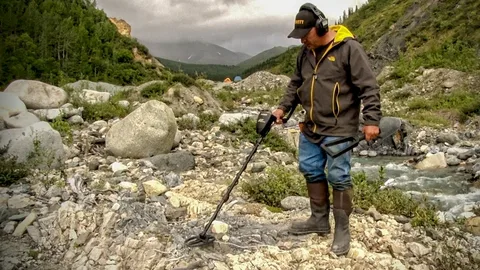Mining, a historically significant industry, has been a cornerstone of many local economies around the world. The extraction of valuable resources from the ground has provided employment, investment, and economic growth to communities for centuries. However, the impact of mining on local economies is a complex and often controversial issue. In this paper, we will explore the effects of mining on local economies, the wealth that lies beneath the surface, and the implications for sustainable development.
“Uncovering the Wealth Below: The Impact of Mining on Local Economies” is a report that explores the economic effects of mining activities on nearby communities. The report delves into the various ways in which mining can impact local economies, including through job creation, infrastructure development, and tax revenue generation. It also considers potential negative impacts such as environmental degradation, displacement of local populations, and the “resource curse” phenomenon. The report provides a comprehensive analysis of the complex and multifaceted relationship between mining and local economies, offering insights for policymakers, industry stakeholders, and local communities.
Exploring the Environmental Impact of Modern Mining Techniques

Exploring the Environmental Impact of Modern Mining Techniques involves assessing the effects of various extraction methods on the environment. This includes evaluating the impact of land disturbance, water pollution, and air emissions, as well as the destruction of natural habitats and the release of toxic substances into the environment. Researchers also analyze the long-term consequences of mining activities and strive to develop sustainable mining practices that minimize environmental harm. Additionally, they may investigate the potential for using advanced technologies, such as bioleaching and phytomining, to mitigate the environmental impact of mining operations.
The Future of Renewable Energy in the World of Mining

The future of renewable energy in the world of mining holds great potential for reducing the environmental impact of mining operations. By transitioning to renewable energy sources such as solar, wind, and hydro power, mining companies can significantly decrease their carbon footprint and reliance on fossil fuels.
Renewable energy technologies are becoming increasingly cost-competitive and efficient, making them a viable option for powering mining operations. In addition to reducing emissions, renewable energy can also lower operational costs and enhance energy security for mining companies.
Many mining companies have already begun incorporating renewable energy into their operations, and this trend is expected to continue as the industry adapts to the growing demand for sustainable practices. Governments and regulatory bodies are also providing incentives and implementing policies to encourage the adoption of renewable energy in the mining sector.
Overall, the future of renewable energy in mining is promising, with the potential to drive significant environmental and economic benefits for the industry. As technology continues to advance and costs continue to decrease, renewable energy is likely to play a key role in shaping the future of mining operations worldwide.
A Closer Look at the Economic Advantages of Mine Rehabilitation

Mine rehabilitation refers to the process of restoring a mine site to a safe and environmentally stable condition after mining activities have ceased. While the primary goal of rehabilitation is to mitigate environmental impacts and ensure the safety of the surrounding community, it also presents various economic advantages.
One of the significant economic benefits of mine rehabilitation is the creation of employment opportunities. The process requires a range of skilled labor, including environmental scientists, engineers, heavy equipment operators, and construction workers. This can contribute to local economic development and provide jobs for the community.
Additionally, successful mine rehabilitation can lead to the redevelopment of the site for alternative land uses, such as agriculture, forestry, or recreational purposes. This can generate revenue for the local economy and contribute to the long-term sustainability of the region.
Furthermore, rehabilitating a mine site can enhance the overall property value and attractiveness for future investment and development. Restoring the land to a productive and safe condition can make it more appealing for potential buyers or investors, thereby stimulating economic growth in the area.
In conclusion, mine rehabilitation offers various economic advantages, including job creation, potential for alternative land use development, and increased property value. By considering the economic benefits of rehabilitation, mining companies and stakeholders can prioritize and invest in the responsible and sustainable closure of mine sites.
Understanding the Role of Technology in Contemporary Mining Operations

Understanding the Role of Technology in Contemporary Mining Operations involves examining the ways in which technological advancements have affected the way mining operations are conducted. This includes the use of automation, data analytics, remote monitoring, and other advanced technologies to improve safety, increase productivity, and reduce environmental impact. It also involves understanding the potential impact of emerging technologies such as artificial intelligence and machine learning on the future of mining operations. By gaining a deep understanding of these technological advancements, mining professionals can make informed decisions about how to integrate and utilize them in their operations for maximum benefit.
Challenges and Opportunities in the Global Mining Industry
Challenges in the global mining industry include regulatory limitations, environmental concerns, and the increasing cost of operations. These challenges can make it difficult for mining companies to remain profitable and competitive in the market. Additionally, the industry is also facing a shortage of skilled workers and an aging workforce, which can further hinder productivity.
On the other hand, opportunities in the global mining industry lie in technological advancements, such as automation and data analytics, which can help improve efficiency and safety in mining operations. There is also a growing demand for minerals and metals in emerging economies, presenting new market opportunities for companies in the industry. Furthermore, sustainability and eco-friendly practices are becoming increasingly important, providing opportunities for companies to develop and implement responsible mining practices. Overall, the global mining industry is ripe with both challenges and opportunities as it navigates through a rapidly changing global landscape.
The Importance of Sustainable Practices in Mine Extraction
Sustainable mine extraction practices are crucial for minimizing environmental impact and promoting responsible resource management. These practices aim to reduce the use of natural resources, conserve energy, and minimize waste generation during the extraction process. By implementing sustainable practices, mining companies can help protect ecosystems, reduce carbon emissions, and ensure the long-term availability of resources for future generations. This can be achieved through adopting efficient technologies, reclamation and restoration of mined areas, and the use of renewable energy sources. Additionally, transparent reporting and compliance with environmental regulations are essential in promoting sustainable mine extraction practices.
The Evolution of Safety Measures in Modern Mining
The evolution of safety measures in modern mining has been driven by advancements in technology and a growing understanding of the potential hazards associated with extracting natural resources from the earth. Historically, mining has been one of the most dangerous industries, with high rates of accidents and fatalities. However, over time, safety regulations and practices have been developed and implemented to mitigate these risks.
One of the key developments in modern mining safety has been the use of advanced equipment and automation to reduce the exposure of workers to hazardous conditions. This includes the use of robotics and remote-controlled machinery to perform tasks in dangerous areas, as well as the use of monitoring systems to detect and respond to potential safety hazards in real time.
Furthermore, there has been an increased emphasis on training and education for mining workers, with a focus on promoting a safety-first culture and empowering employees to take an active role in identifying and preventing hazards. Companies have also implemented strict safety protocols and regular inspections to ensure compliance with regulations and best practices.
In addition, the industry has seen a shift towards sustainable and environmentally-friendly mining practices, which inherently have safety benefits. This includes initiatives to minimize the use of toxic chemicals, reduce air and water pollution, and ensure the responsible disposal of waste materials.
Overall, the evolution of safety measures in modern mining has been driven by a commitment to protecting workers, preserving the environment, and promoting the long-term sustainability of the industry. While challenges remain, ongoing research, innovation, and collaboration between stakeholders will continue to drive improvements in mining safety for the future.
Examining the Social Impacts of Mining on Local Communities
See also: gold in metal detector
Examining the social impacts of mining on local communities involves studying the effects of mining activities on the people and the society living in the vicinity of the mines. This includes examining how mining affects local economies, social structures, cultural practices, and overall quality of life. It also involves understanding the social conflicts and tensions that may arise due to the presence of mining operations. Additionally, examining the social impacts of mining on local communities involves identifying ways to mitigate negative impacts and enhance the positive contributions of mining to the well-being of the communities. This research is important for informing decision-making and developing strategies for sustainable mining practices that prioritize the welfare of local residents.
Navigating the Legal and Ethical Dimensions of Mine Exploration
Navigating the Legal and Ethical Dimensions of Mine Exploration involves understanding the complex and often ambiguous regulations and guidelines that govern the exploration and extraction of mineral resources. This includes adhering to environmental protection laws, obtaining necessary permits and permissions, and respecting indigenous land rights. Ethical considerations also play a significant role in mine exploration, including issues related to labor rights, community engagement, and sustainable extraction practices. It is essential for companies and individuals involved in mine exploration to navigate these legal and ethical dimensions responsibly to ensure compliance and minimize negative impacts on the environment and local communities.
Innovative Solutions for Managing Mining Waste and Pollution
Innovative solutions for managing mining waste and pollution include the use of advanced technologies such as tailings management systems, which help to reduce the environmental impact of waste disposal. Additionally, the implementation of water recycling and treatment systems can help minimize the pollution of local water sources. Other approaches involve the use of sustainable mining practices and the development of alternative materials to reduce the production of waste. These solutions aim to mitigate the environmental and social impact of mining activities while ensuring the long-term sustainability of the industry.










